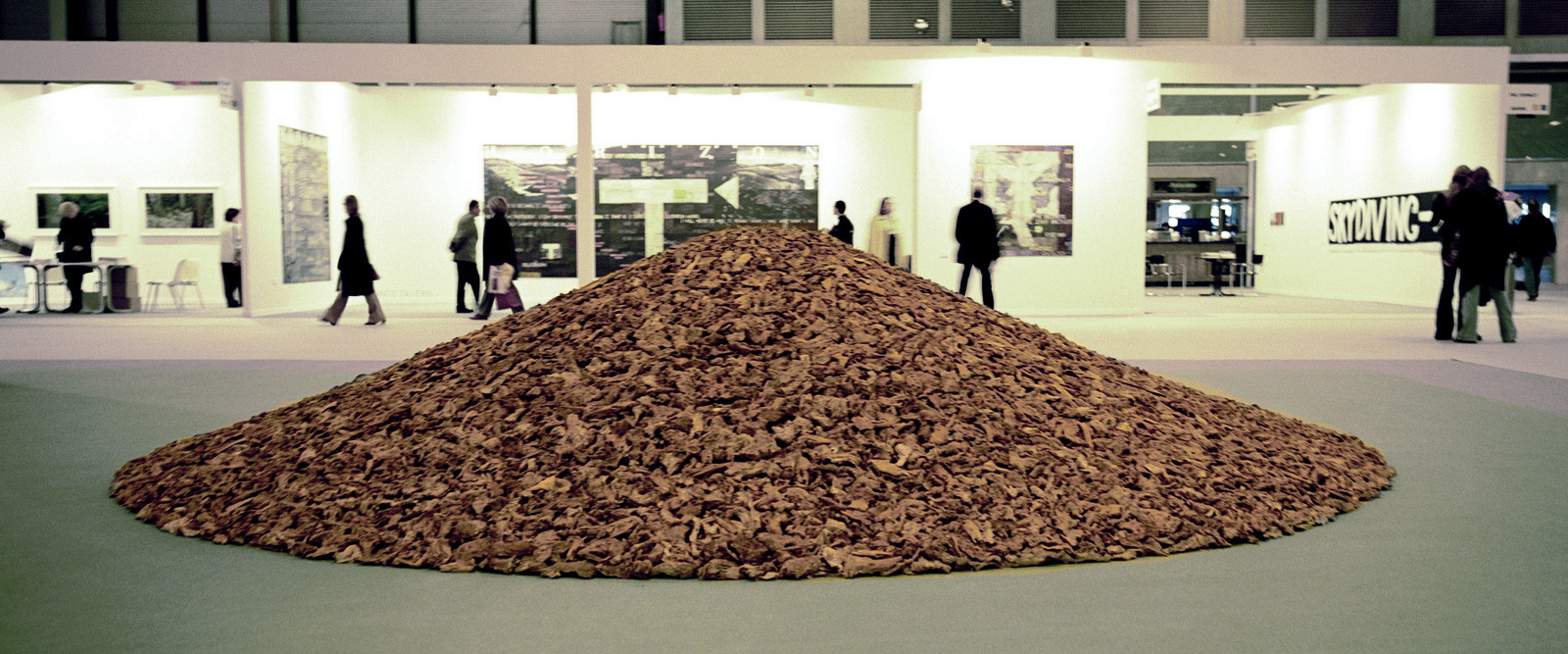Malleefowl nest 9: Summer
ARCO, Madrid, Spain
“A progenitor of Ecocentric Art and a master of the ordinary”, writes Daniel Thomas, Emeritus Director of the Art Gallery of South Australia, describing the work of artist, conservationist and farmer, James Darling.
“Nature is not a background”, is James Darling’s manifesto, underscoring his place as a creator of some of contemporary art’s most original and arresting sculptural works. His large photographs and sculptural installations are testament to pioneer years of creating a farm, Duck Island, while conserving wetlands in a fragile wilderness region of southern Australia. Born Melbourne 1946, Darling is best known for his continuing series of life-sized installations based on the monumental incubating mounds of the endangered malleefowl - the only mound building bird in arid land in the world. Instead of the sand, leaves and vegetation that these unique birds use to make their nets, Darling builds with the spiky, irregular, hardwood roots of the malleegum tree, conserved from early land-clearing years on Duck Island.
After seeing Malleefowl nest 8: Autumn in an international group exhibition in Finland, Richard Grayson, Artistic Director, Biennale of Sydney, wrote of the installation’s “Intransigence, triggering numerous associations both from worlds of nature and words of culture, but which remains resolutely a very strange object, uncannily smooth and regular, shifting from the artisanal to the natural, then back to the strange, the alien, the autonomous”.
Besides being a builder of nests, James Darling is a photographer, writer, community activist, conservationist, saltland farmer and highly successful cattle producer. Combining art, agriculture and the environment, Darling’s work asserts revolutionary cultural change through an understanding of the nature of nature.

